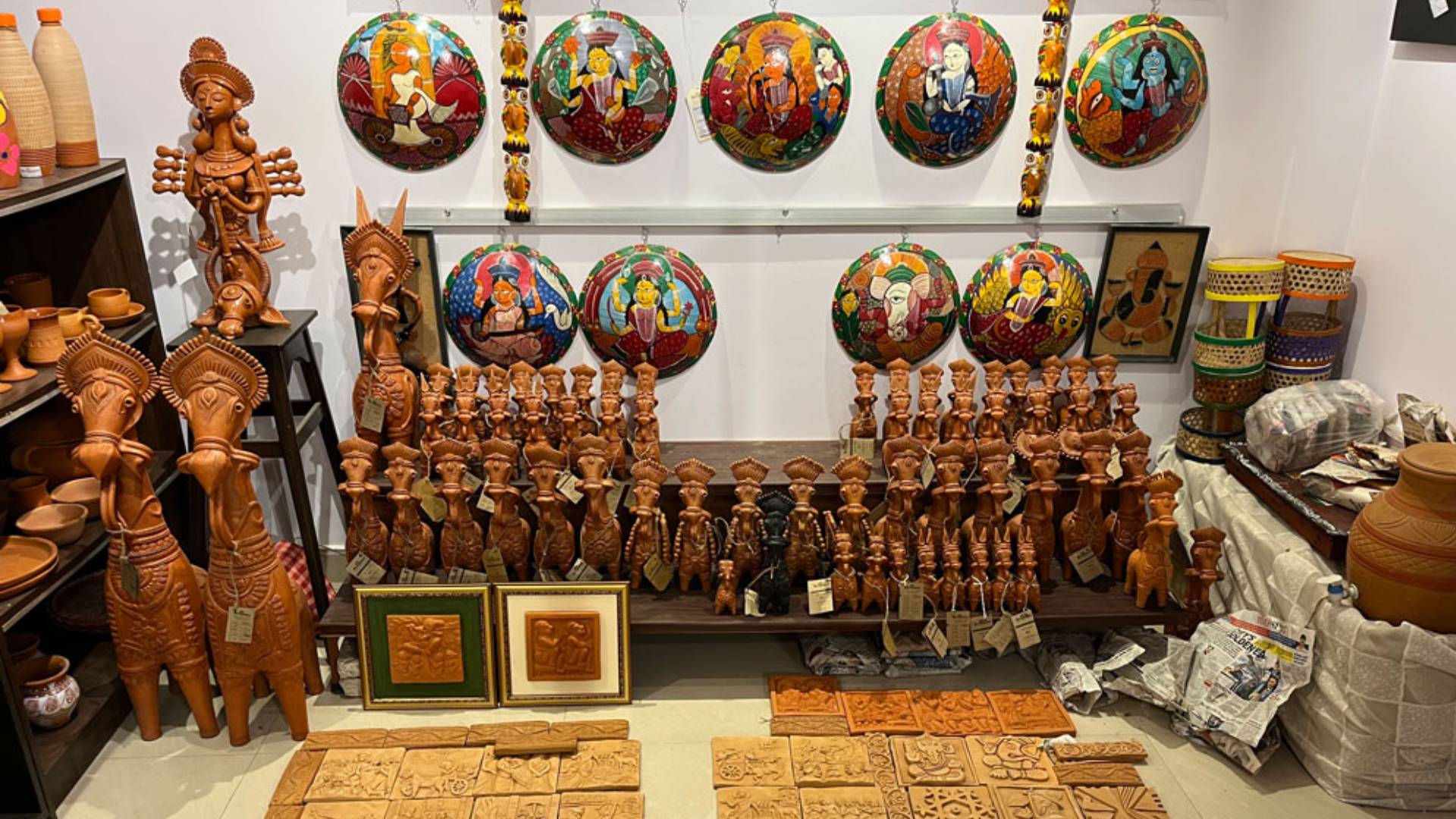Introduction
India has always been a land of rich traditions, vibrant cultures, and exquisite artistry, and Bengal stands proudly at the heart of this legacy. Bengal Handicrafts represent more than just artistic creations—they are symbols of history, emotion, and cultural pride. Crafted with patience and passion by skilled artisans, these handicrafts have preserved Bengal’s essence through centuries of changing times. From delicate terracotta figures to intricate kantha embroidery, every piece tells a story of craftsmanship, heritage, and the timeless beauty of human creativity.
The Historical Roots of Bengal’s Artistic Excellence
The origins of Bengal’s handicraft traditions trace back to ancient times when artisans would create everyday items that blended functionality with aesthetic appeal. Archaeological evidence from regions like Chandraketugarh and Mahasthangarh reveals that Bengal was once a hub for pottery, textile weaving, and metal artistry. Over time, the Mughal and British influences introduced new materials and techniques, enriching Bengal’s craft traditions even further. Despite modernization, many families in Bengal continue to pass down these skills from generation to generation, keeping the ancient art forms alive.
Diverse Forms of Bengal Handicrafts
The range of handicrafts produced in Bengal is both vast and unique. Each craft represents a different region, tradition, and community within the state, reflecting the cultural diversity of Bengal. Some of the most notable crafts include:
1. Terracotta Art
Terracotta is one of Bengal’s oldest and most recognizable art forms. The artisans of Bishnupur are world-famous for creating exquisite terracotta temples and sculptures that depict mythological scenes and everyday life. The Bankura Horse, a masterpiece of this tradition, has become a symbol of Bengal’s folk art, admired for its elegant curves and rustic charm.
2. Kantha Embroidery
Originating from rural Bengal, Kantha embroidery involves layering old sarees and fabrics together, then stitching them with fine, detailed patterns. Traditionally used to create quilts and covers, Kantha has evolved into contemporary fashion items like stoles, sarees, and cushion covers. The craft reflects a woman’s creativity and storytelling ability, often portraying tales of love, nature, and daily life.
3. Shola Pith Craft
Shola pith, also known as Indian cork, is used by artisans to create intricate decorative items, especially for traditional festivities and weddings. This craft is closely tied to Durga Puja celebrations, where shola is used to adorn idols and pandals. The white, sponge-like material symbolizes purity and devotion, adding an ethereal beauty to Bengal’s spiritual and artistic landscape.
4. Dokra Metal Craft
Dokra is an ancient form of metal casting practiced by tribal communities in Bengal. Made using the lost-wax technique, Dokra artifacts include jewelry, animal figurines, and ritualistic items. Each piece stands out for its rustic appearance and distinctive design. The craft, primarily found in regions like Bankura and Burdwan, is a perfect blend of tradition and innovation.
5. Wooden and Cane Works
In Bengal, wood and cane are transformed into elegant furniture, decorative items, and utility products. The artisans of Nadia, Dinajpur, and North Bengal specialize in making finely crafted furniture, idols, and baskets. These pieces are known for their eco-friendly nature and long-lasting durability.
The Cultural Significance of Handicrafts in Bengal
Bengal’s handicrafts are not just commodities; they are carriers of cultural identity. Each item mirrors the beliefs, customs, and way of life of the community it originates from. Artisans often draw inspiration from religious stories, folklore, and rural life, infusing every creation with meaning and spirit. Festivals, particularly Durga Puja, play a major role in promoting these art forms, as they provide artisans with a platform to showcase their skills to a wider audience.
Modern Revival and Global Recognition
In recent years, Bengal Handicrafts have gained renewed attention, both domestically and internationally. Government initiatives, cultural exhibitions, and online marketplaces have helped artisans connect with global audiences. Urban consumers now appreciate the authenticity and sustainability of handmade products, leading to a growing demand for Bengal’s crafts in home décor, fashion, and gifting sectors. Additionally, young entrepreneurs are collaborating with traditional artisans to modernize designs while preserving authenticity, giving these crafts a contemporary appeal.
The Economic Impact of Handicrafts
The handicraft industry is a major source of income for thousands of rural families across Bengal. Many women, in particular, find empowerment through these crafts, earning livelihoods while maintaining their household responsibilities. Organizations and NGOs are also working to provide training, financial support, and access to markets, ensuring that these artisans receive fair compensation for their skills. The export potential of Bengal’s handicrafts continues to expand, making it a vital contributor to India’s cultural economy.
Conclusion
The story of Bengal Handicrafts is a celebration of timeless artistry, cultural pride, and human resilience. From the terracotta temples of Bishnupur to the vibrant threads of Kantha, every creation carries the heartbeat of Bengal’s heritage. As these crafts continue to evolve and reach global platforms, they remind us that tradition and modernity can coexist beautifully. Supporting Bengal’s artisans is not just about appreciating art—it’s about honoring history, empowering communities, and keeping the soul of Bengal alive for generations to come.
